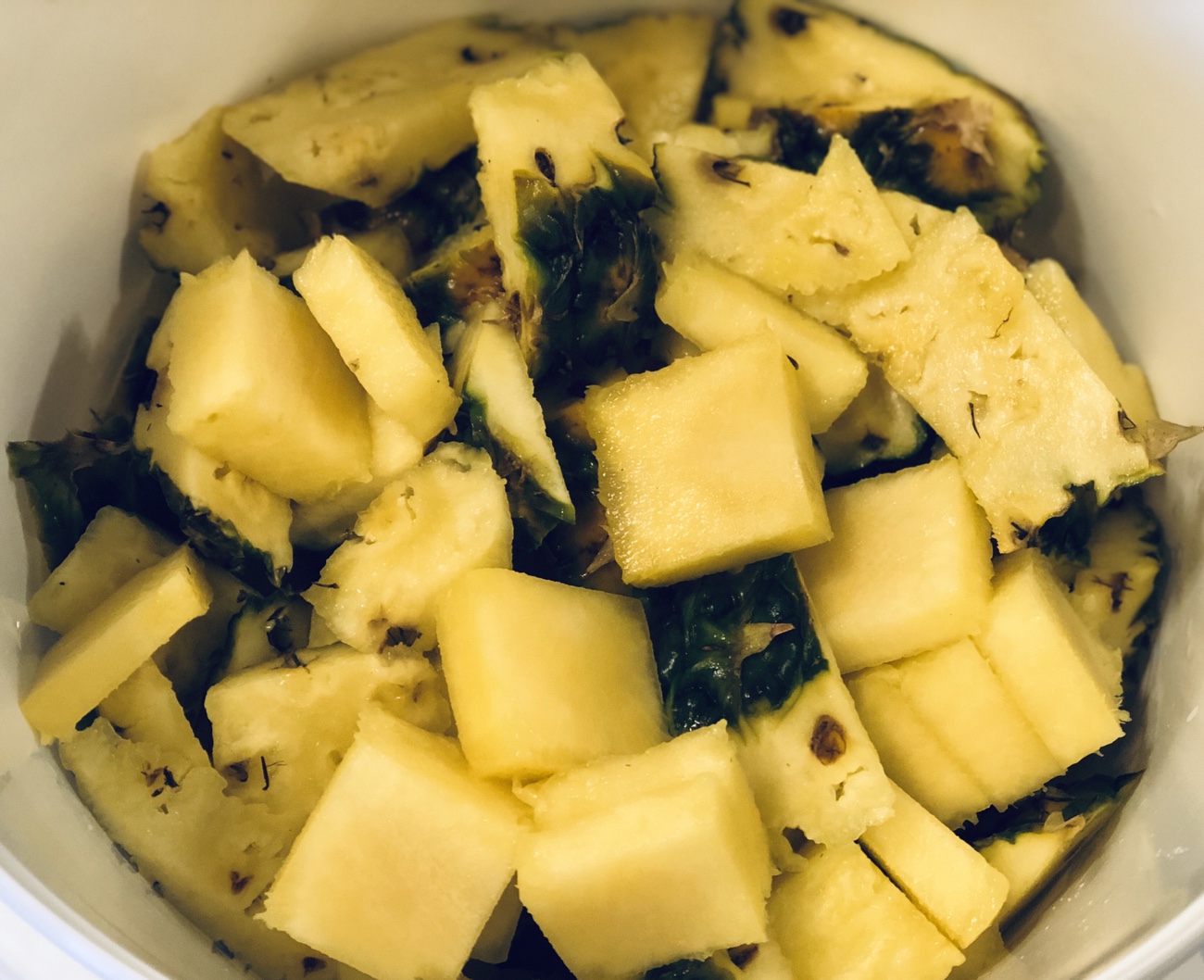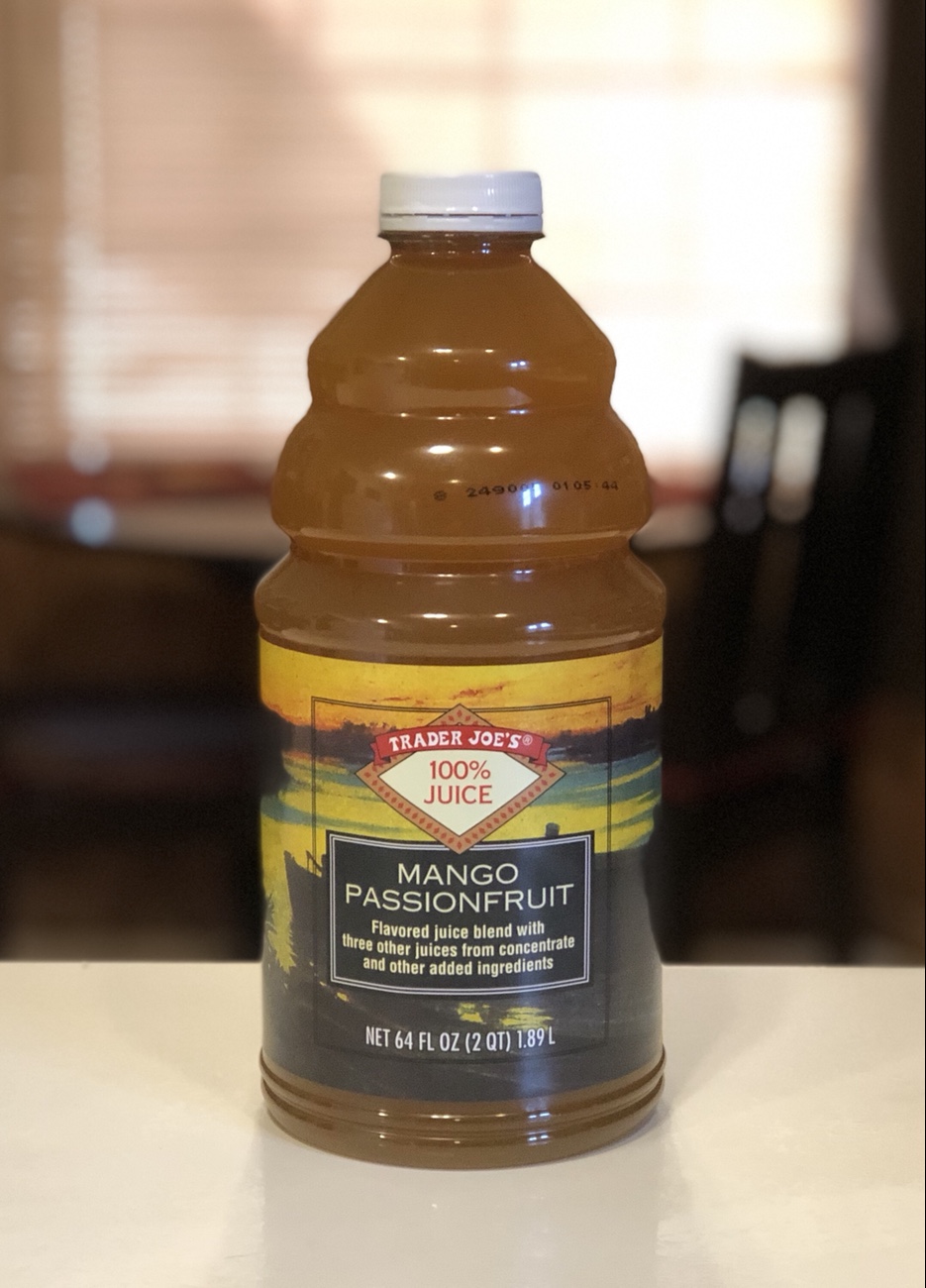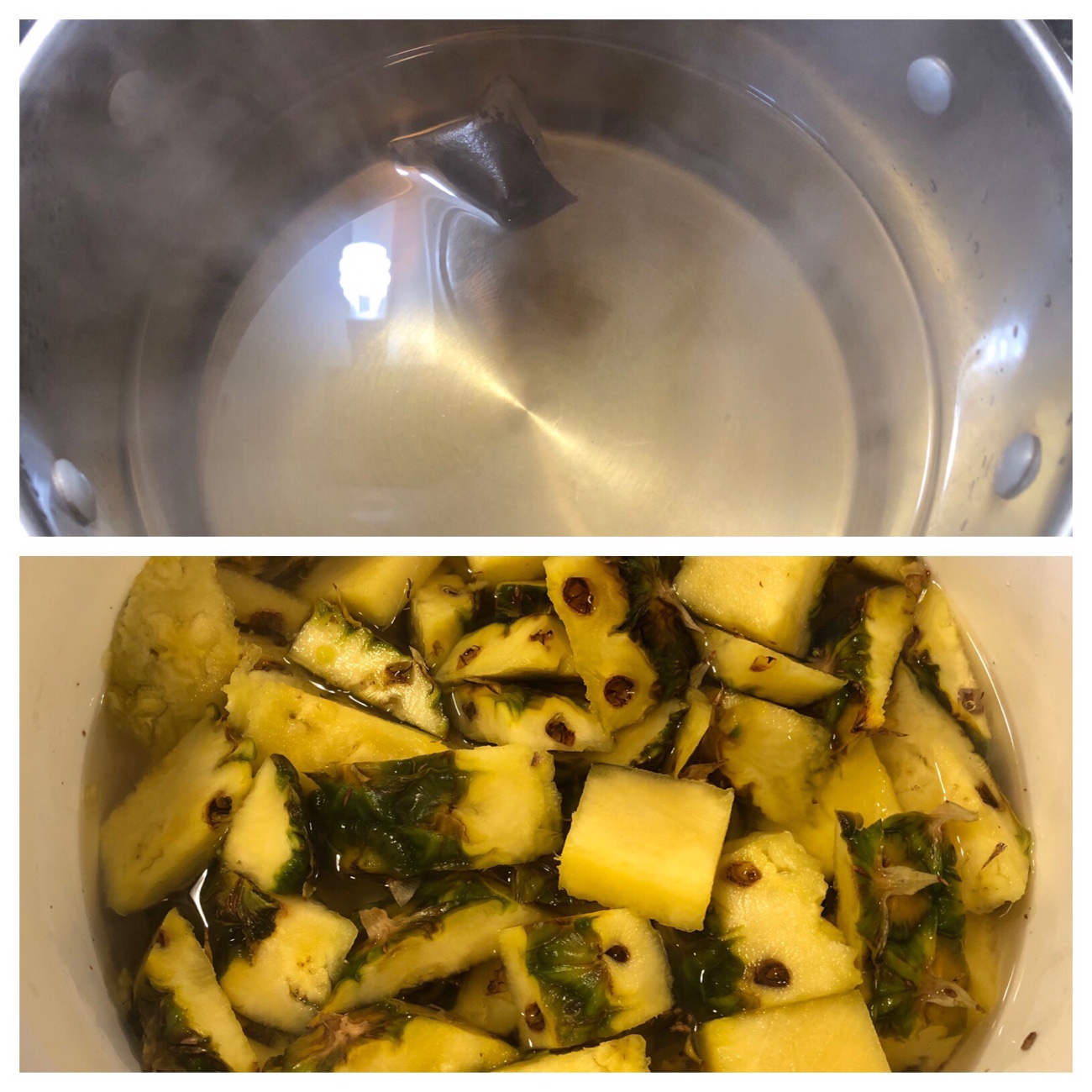
Who doesn’t like “variations on a theme”? Especially when the themes are no food waste and wine?
Having cut a couple of perfectly ripe and (amazingly) undamaged pineapples up, it was time to start wine with the peels and cores…and some mango-passionfruit juice!
Pineapple peel wine is lovely in its own right, and it complements Indian food amazingly well. But I wanted to mix things up a bit and see what I could do to infuse a little more fruit flavor into the pineapple base, which ferments dry and slightly savory. Having picked up a half gallon of (preservative free) mango-passionfruit juice while at Trader Joe’s, I figured “why not?”

I employed my standard pineapple peel wine recipe, but cut the sugar back to 4 cups, since I was adding 2 pints of the mango-passionfruit juice. I also added a black teabag instead of powdered tannin. A teaspoon of yeast nutrient and, when the mixture had cooled sufficiently, champagne yeast, and it was ready to work some magic.

As it began its initial ferment, I was conflicted about whether I should add some pectic enzyme to prevent haze, but decided to let this one do its thing and see if it clears on its own – pure pineapple peel usually clears well without assistance.
Are you a winemaking expert who’s reading this and thinking “what are you doing?? For crying out loud, add the pectic enzyme!” I may regret it later when I’m looking at hazy wine, but I’m going to let this one play out. It may turn out to be a learning opportunity, and unless it’s funky, should be drinkable.
The next day, the must was very actively fermenting and smelled like tropical fruit (go figure). Yum. After five days of fermenting (and a happily bubbling airlock), I strained off the solids and moved the must into a secondary fermenter. It’s cloudy, but the mango-passionfruit juice definitely brought a deeper color to it; with pure pineapple peel, it would be a milky whitish hue at this point in the process. It still retains a hint of fruit, but I also caught a whiff of alcohol, suggesting that this may ultimately turn out to be a slightly higher ABV wine.

As with many projects, patience is needed when making wine. It should continue clearing over the next few weeks, and be ready to rack to a clean carboy in about a month. Another month or so, and it may be ready for bottling. I say “may” because its readiness for any step depends on how it’s behaving: sometimes, wine isn’t ready for bottling because it’s still too active. I prefer not to chemically stabilize my wines, so it becomes a waiting game – but it’s worth the wait.
Interested in how this plays out? Stay tuned for an update!
